- Home
- Equipment Reviews
-
Amplification Digital Integrated Mono Block Preamplifier Phono Solid State Tube Analog Sources Cartridges Tape Tone Arms Turn Tables Digital Sources Digital Disc Players DACs Music Servers Streaming Music Services
-
Accessories Power Conditioners Room Accoustics Racks & Stands Audio Software Other iPod iPod Speakers iPod Headphones iPod Transports Headphones Over Ear On Ear In Ear Headphone Amplifier
-
- Audio News
- Event Reports
- California Audio Show, San Francisco
- Consumer Electronics Show
- T.H.E. Show
- Rocky Mountain Audio Fest
- AXPONA
- Salon Son & Image
- Hi-Fi Show & AV Expo
- High End
- Lone Star Audio Fest
- Capital Audio Fest
- TAVES - Toronto Audio Video Entertainment Show
- AK Fest
- Home Entertainment Show
- New York Audio $ AV Show
- Open House Events
- Spotlight
- Music
- The Columns
- 2024 California Audio Show
2010 California Audio Show Original Commentaries III
The System Approach and System Synergy
By: Richard Austen | August 2010
Latest Reviews & Audio News
-

PS Audio AirLens and DirectStream DAC Mk2 Review
(July 26, 2024) -

Audio Note UK Meishu Tonmeister 300B integrated amplifier, P3 Tonmeister stereo amplifier, M6 Phono Balanced Preamp Review
(July 12, 2024) -

Douglas Schroeder’s One Year Exploration of Digital Front End Systems
(June 25, 2024) -

Arya Audio Labs RevOpods Anti-Vibration Feet Review
(June 25, 2024) -

Lego Icons Retro Radio Review
(June 14, 2024) -
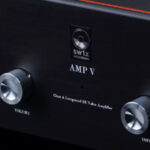
SW1X Audio Design AMP V “Titan” Special directly-heated triode integrated amplifier Review
(June 14, 2024) -
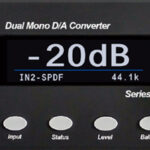
Bricasti Design Model 1 Series II D/A Converter and M5 Network Player Review
(May 24, 2024) -

Star Wars – The Empire Strikes Back – In Concert, May 2, 2024
(May 20, 2024) -
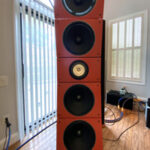
PureAudioProject Quintet15 with Voxativ AC-X field-coil open-baffle loudspeaker system Review
(May 20, 2024) -
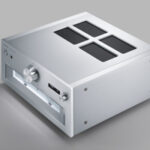
Technics SU-R1000 reference stereo integrated amplifier Review
(May 20, 2024) -

Computer Audio Design GC 1.1 & GC3.1 Ground Control external grounding systems Review
(May 20, 2024) -

Andy Grove of Audio Note UK on IO LTD
(March 23, 2024) -
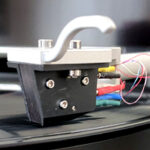
Audio Note UK IO Limited field-coil cartridge system Review
(May 20, 2024) -

EMM Labs MTRX monoblock Input Board Upgrade Review
(March 7, 2024) -

May 2018 Sibelius Violin Concerto concert video via Berliner Philharmoniker Digital Concert Hall app
(February 16, 2024)
-
Categories
-
Amplification Digital Integrated Mono Block Preamplifier Phono Solid State Tube Analog Sources Cartridges Tape Tone Arms Turn Tables Digital Sources Digital Disc Players DACs Music Servers Streaming Music Services
-
Accessories Power Conditioners Room Accoustics Racks & Stands Audio Software Other iPod iPod Speakers iPod Headphones iPod Transports Headphones Over Ear On Ear In Ear Headphone Amplifier
Site Sections
Copyright ©1996-2024 All Rights Reserved.
Popups Powered By : XYZScripts.com

The term synergy in audio has been used a lot over the years but I would like to tackle the issue of synergy in its ultimate form – the system approach.
What is the system approach? Every audiophile builds a system but how many audiophiles start out with a clear “system” in mind at the initial outset. From reading numerous forums it is clear that not a great deal of audiophiles approach a stereo system with a clear end point in mind. Usually the audiophile (and hopefully music lover) will select a component to add to his or her system to “improve” or “fix” the sound of the stereo. We decide we like our speakers more than our CD player so we read the magazine and online reviews, or perhaps ask questions on internet forums and we decide that CD player X will be the fix we need.
How does the audiophile conclude that CD player X would be the magic bullet? Perhaps the reader reads a reviewer who was using horn speakers and tube amps and the CD player that sounded wonderful in his set-up would be a wondrous “fix” for the reader running solid-state amps and planar speakers?
This approach of the individual component review is problematic on several fronts and I would like to look at a few of them.
Firstly, if we assume that audio components sound different from one another – then every “difference” is going to react differently with the components it is connected to (which also sound different from each other). In other words, if a tube CD player with zero-times over-sampling sounds different than a SS CD player with upsampling, then it stands to reason that each of those CD players will react quite differently when connected to a tube preamplifier versus a SS preamplifier – without even looking at various impedance issues.
Then, there is the ability of the reviewer to be fair to the audio component. Reviewers are often blamed for being too positive and rarely, if ever, negative of audio components. Well, this makes sense from a certain perspective. Most equipment works – it does as advertised. If a given CD player sounds darker or brighter in my system it may be an issue of a mismatched component, but could very well work a lot better in another set-up. Thus, the component in for review may not be a problem at all, it could be showing up weaknesses in the reviewer’s system, it could merely be a mismatch. With no way to “know for absolute certainty” it is hard to be overly critical of most reasonably well made working components.
Thirdly, the ability of the reader to crosscheck the reviewer’s opinions is next to impossible because like mentioned in the previous paragraph, the components in my system, my room, my furnishing will be different than yours. What works with my tube amp may not work with your SS amp.
Finally, the manufacturers can be blamed for poor system matching. Most manufacturers build with an overall result in mind whether creating complete audio systems or designing with certain loudspeakers in mind. After all, the amplifier and CD player are only built by companies using loudspeakers of some kind in mind. It would be beneficial for reviewers and consumers to know what speakers are the choice of a given amp/source maker in order for you to know what sonic aesthetic the maker is after.
Without going to much more in depth, here are some solutions to some of these problems. The most obvious is for you, the audiophile, to listen to as many “systems” as possible and when you find a system that truly does turn your dial that you take detailed notes of all the components in the system. Even if you don’t currently have the money to buy every component at the outset you will have a clear target in mind. Secondly, attending audio shows will be helpful to compare “systems” in very similar rooms to each other. This allows for some useful comparisons on the one hand, but it also allows you to see what the manufacturers use for demonstrating their equipment. Wonder what amp Speaker X company prefers to use with their loudspeakers? You will get your answer.
There are numerous other variables to consider at shows, such as room constraints but this should at least point you in a starting direction, and make future component upgrading toward a positive direction of making a good system better, rather than fixing a system that may be causing irritation.
Richard Austen
Reviewer, Dagogo